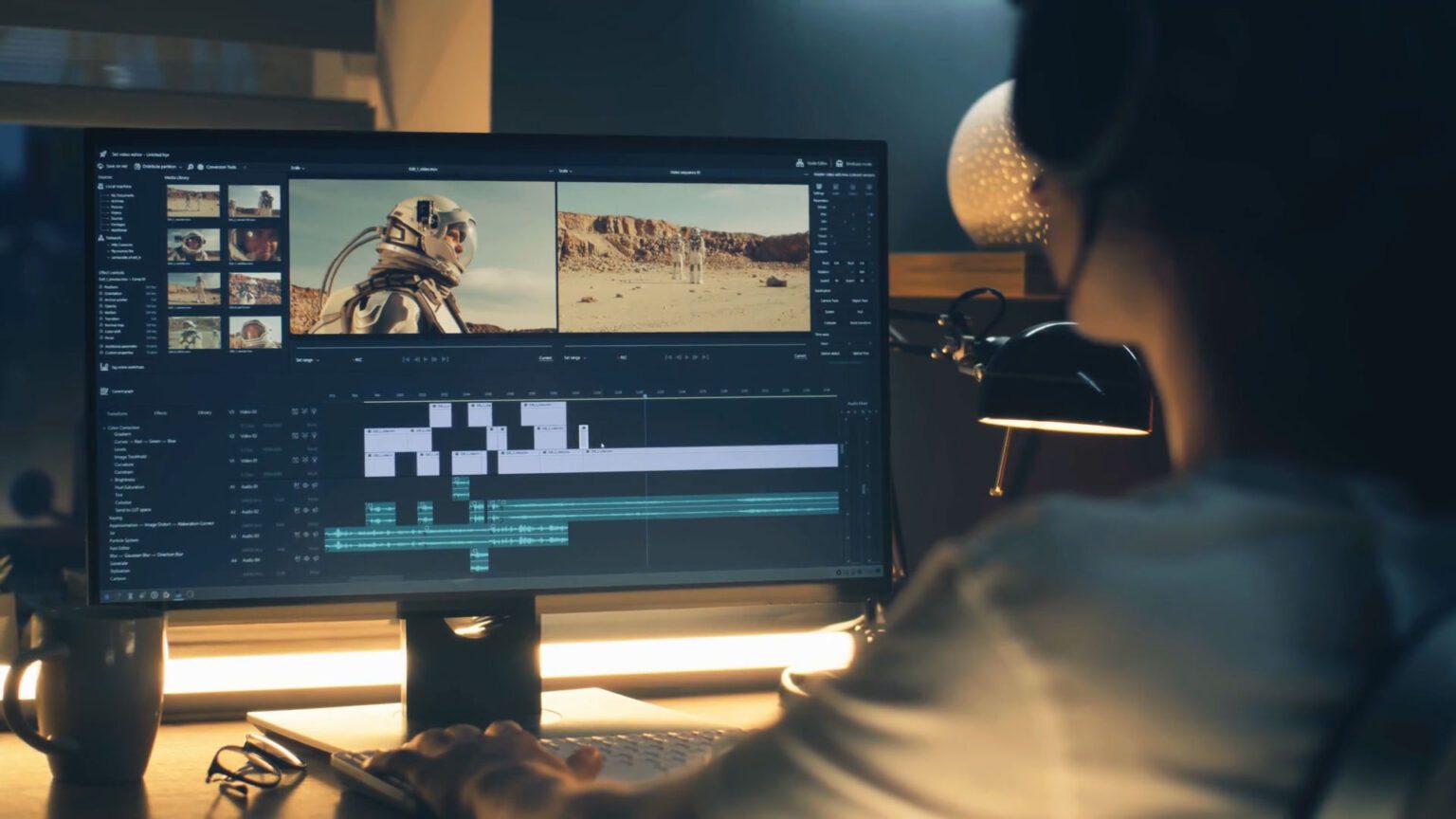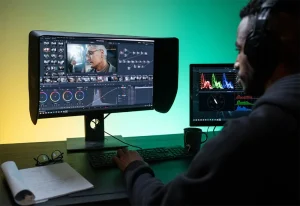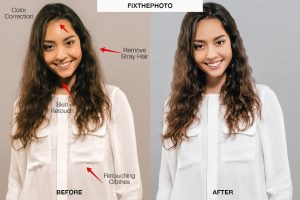In photo editing, focus on exposure, color correction, and cropping, using tools like Adobe Photoshop or Lightroom. For video editing, master cutting, arranging scenes, and adding transitions with software like Adobe Premiere Pro. Understanding timelines and layers is crucial for smooth edits. Both skills require creativity and technical know-how. Challenges include learning tools, maintaining consistency, and managing file sizes. Embrace these techniques to elevate your projects—there’s much more in store for you.
Understanding the Basics of Photo and Video Editing
Photo and video editing are essential skills in today’s digital world, each with unique techniques and tools. As you dive into editing, grasping the basics is crucial. For photos, you’ll focus on elements like exposure, color correction, and cropping. You’ll learn how to enhance images by adjusting brightness, contrast, and saturation to make them visually appealing.
When it comes to video editing, the process involves cutting clips, arranging them, and adding transitions to craft a compelling narrative. You’ll also need to sync audio, incorporate effects, and ensure smooth timing. Understanding the timeline and layers is vital for seamless edits.
Essential Tools for Photo and Video Editing
When embarking on your editing journey, having the right tools makes all the difference. For photo editing, software like Adobe Photoshop and Lightroom are indispensable. They offer powerful features for adjusting colors, retouching, and enhancing details. For video editing, Adobe Premiere Pro and Final Cut Pro stand out. They provide robust timelines, special effects, and seamless audio integration. Don’t forget about user-friendly options like Canva for quick edits and DaVinci Resolve for color grading.
Invest in a quality computer with ample RAM and a powerful processor to handle these programs smoothly. A high-resolution monitor ensures accurate color representation. Equally important are peripherals like a reliable mouse and keyboard, which offer precision and ease. With these tools, you’ll be well-equipped to transform your creative visions into reality.
Techniques for Enhancing Visuals in Photos
To truly elevate your photos, focus on mastering techniques that bring out their best features. Start by adjusting the exposure to ensure your photo isn’t too dark or too bright. Enhance colors by tweaking saturation and vibrance, which will make your images pop without looking unnatural. Sharpening is essential for adding detail, but don’t overdo it, or your photo might appear grainy.
Consider using the rule of thirds to improve composition, making the subject more engaging. Cropping can help eliminate distractions, bringing attention to the main focus. Experiment with filters for mood, but use them sparingly to maintain authenticity. Finally, always review your edits on different screens to ensure consistent quality. With practice, these techniques will transform your photos into eye-catching masterpieces.
Crafting Compelling Narratives Through Video Editing
When you’re crafting a compelling narrative through video editing, start by creating a storyboard to ensure a smooth visual flow. Keep your audience engaged by carefully controlling the pacing of your scenes. Use transitions to evoke emotion and guide viewers through the story’s emotional arc.
Storyboard for Visual Flow
Crafting a compelling narrative through video editing starts with a well-designed storyboard that ensures visual flow. Think of a storyboard as your blueprint; it maps out scenes, transitions, and emotions. Begin by sketching each scene, focusing on how one image leads to the next. This helps you visualize the story’s progression and identify potential gaps or redundancies.
As you create your storyboard, pay attention to the sequence of events. Ensure each scene logically follows the previous one, maintaining coherence in your narrative. Consider how you’ll transition between scenes to keep your audience engaged. Remember, a smooth visual flow captivates viewers, guiding them effortlessly through your story. A well-planned storyboard is key to achieving this seamless experience.
Pacing Enhances Engagement
Although often overlooked, pacing is a crucial element that transforms video editing from mere assembly to art. You control the rhythm, guiding viewers through your story at an engaging tempo. By adjusting the timing of your cuts, you create tension, highlight important moments, and maintain interest. Rapid cuts can energize scenes, while slower pacing gives viewers time to absorb information and emotions.
Think of pacing as the heartbeat of your video. It dictates how viewers perceive the narrative, keeping them engaged from start to finish. If your pacing falters, attention wanes, and your message might get lost. Experiment with different speeds and transitions to find the perfect flow that captivates your audience. Remember, a well-paced video can make all the difference in storytelling.
Emotion Through Transitions
Building on the rhythm established by pacing, the way you shift from one scene to another adds a powerful layer of emotion to your video. Transitions aren’t just technical necessities; they’re storytelling tools that can evoke feelings and guide viewers’ emotions. Smooth fades can create a sense of calm or nostalgia, while sharp cuts build tension or excitement. By varying transition styles, you control the narrative flow and emotional impact.
Consider the mood you want to convey. A fast-paced montage might benefit from quick cuts, maintaining energy and excitement. In contrast, a dramatic scene might need slow dissolves to emphasize emotional weight. Experiment with different transitions to see how they change the viewer’s perception. Your choices shape the story’s emotional journey.
Common Challenges in Photo and Video Editing
Diving into the realm of photo and video editing, you often encounter a variety of challenges that can test both your creativity and technical prowess. One major hurdle is mastering the tools. Editing software is packed with features, and navigating them can overwhelm beginners. You’re also tasked with maintaining consistency. Whether it’s color grading in videos or ensuring uniform lighting in photos, inconsistency can disrupt the final product’s flow.
Another challenge lies in managing file sizes and formats, as video files, especially, can be cumbersome. Additionally, balancing creative vision with technical limitations, like hardware constraints, demands adaptability. Lastly, time management becomes crucial. The meticulous nature of editing can lead to long hours, and projects can easily overrun deadlines if not carefully monitored.
Tips for Improving Your Editing Workflow
To enhance your editing workflow, start by organizing your workspace and files efficiently. Create a logical folder structure and name files consistently, so you can easily locate assets. Use shortcuts to speed up tasks—learning them will save you heaps of time in the long run. Customize your editing software’s interface to suit your style and needs, allowing for a more intuitive experience.
Streamline your process by developing a step-by-step workflow. This might include importing files, making rough cuts, and then refining your edits. Always back up your work regularly to prevent data loss. Stay updated with new tools and plugins that can automate repetitive tasks or offer new capabilities. Practicing these tips will improve your efficiency and elevate the quality of your edits.
Frequently Asked Questions
How Do I Choose Between Photo and Video Editing for My Project?
Consider your project’s goals. If you want to capture a single moment or enhance still images, choose photo editing. For dynamic storytelling or capturing movement, video editing’s your best bet. Decide based on your creative vision.
What Are the Cost Differences Between Photo and Video Editing Software?
When you’re comparing costs, photo editing software is generally cheaper than video editing software. Video editing tools often require more advanced features and higher processing power, which can increase the price significantly. Choose based on your needs.
Can Photo and Video Editing Be Self-Taught Effectively?
You can definitely teach yourself photo and video editing effectively. Use online tutorials, practice consistently, and join communities for feedback. With dedication and creativity, you’ll improve your skills and achieve professional-level results over time.
How Does File Format Affect the Editing Process for Photos and Videos?
File format affects your editing process by determining compatibility with software, impacting quality, and influencing file size. Choose formats wisely to ensure smooth editing, maintain quality, and avoid unnecessary conversion steps that can complicate your workflow.
Are There Career Opportunities Specifically for Photo or Video Editors?
You’ll find plenty of career opportunities as a photo or video editor. Industries like advertising, film, and media constantly seek skilled editors. Showcase your portfolio, network, and stay updated with trends to enhance your prospects.


